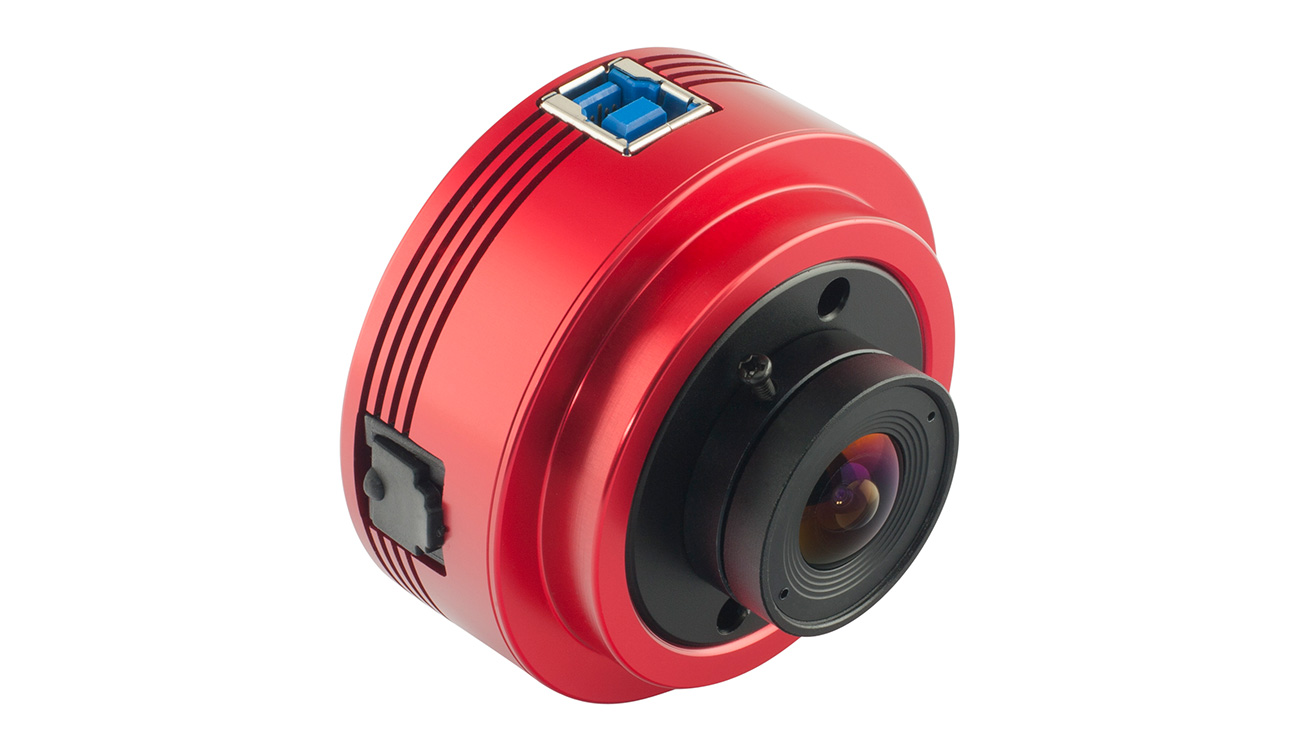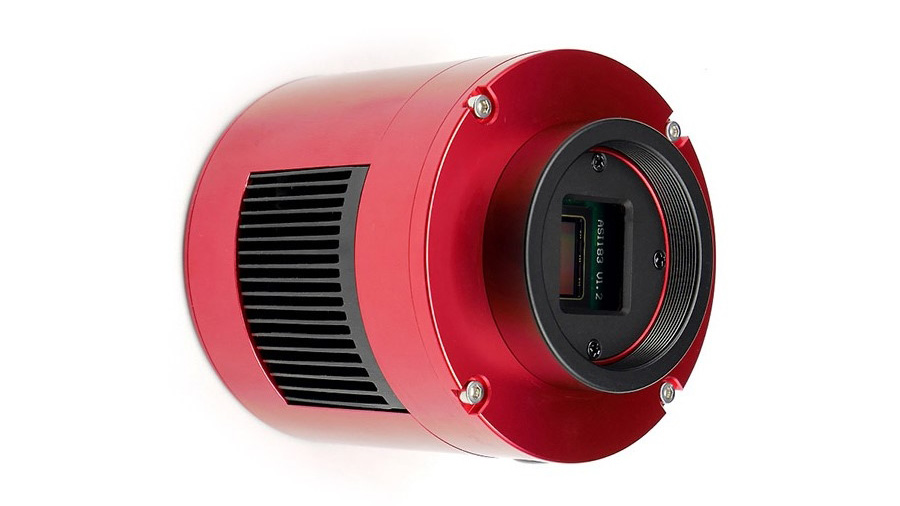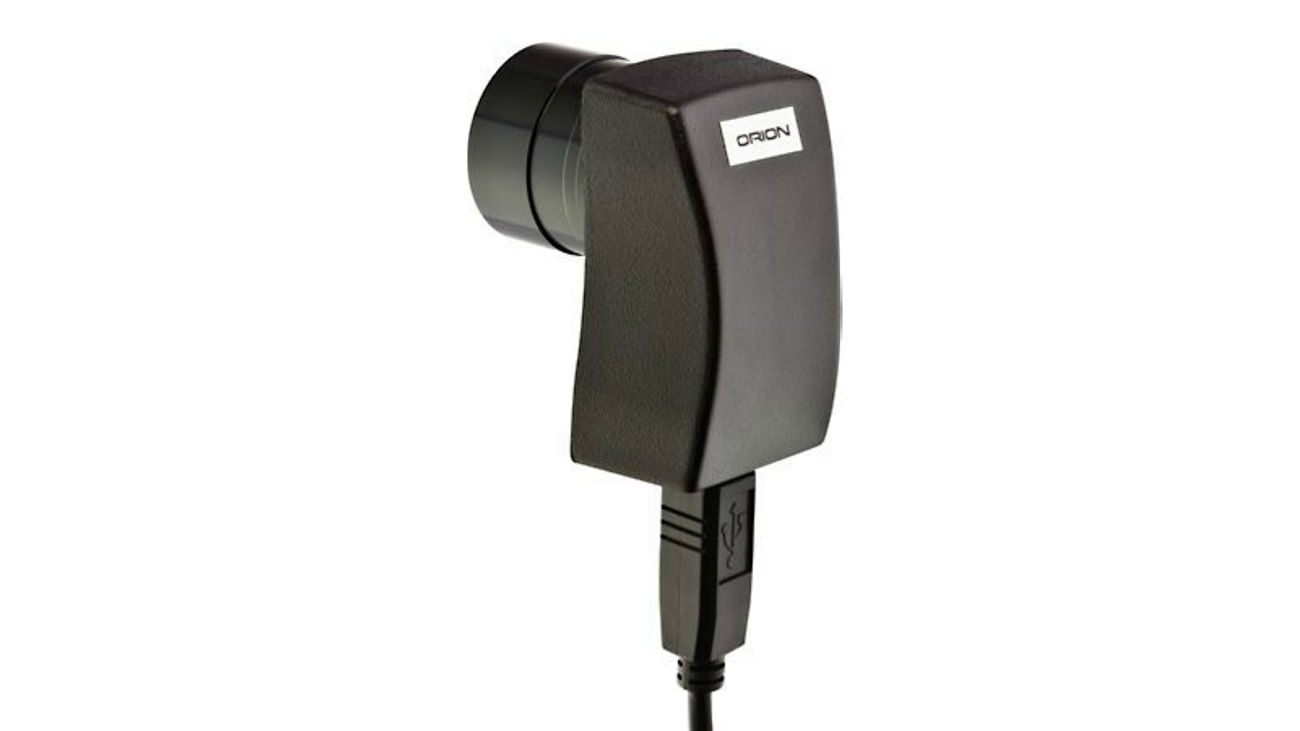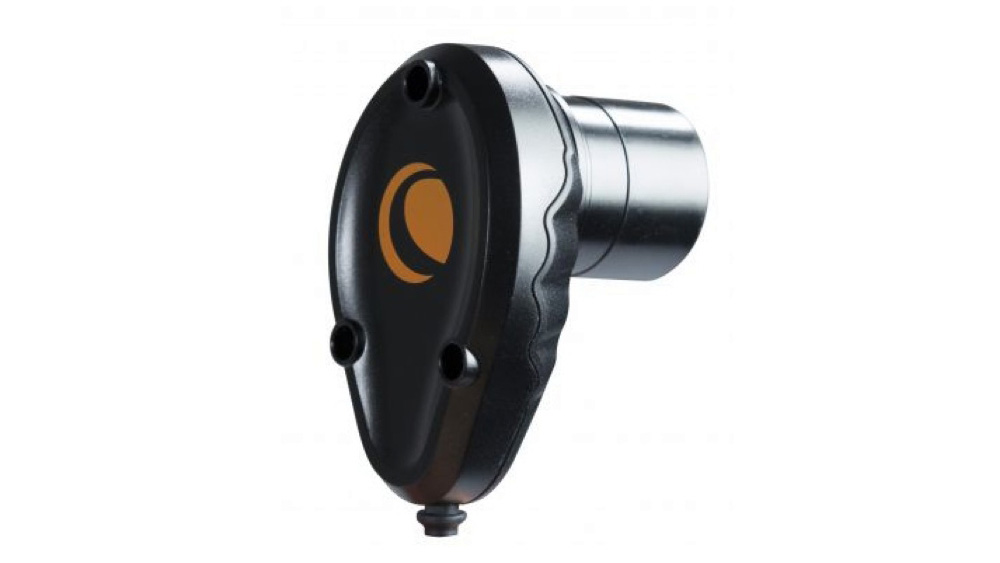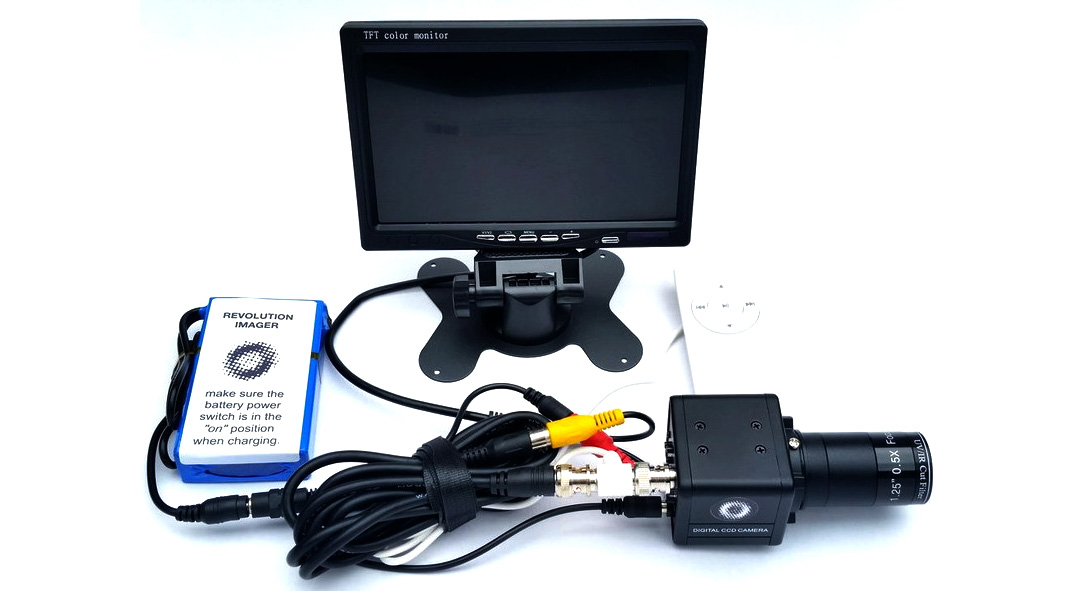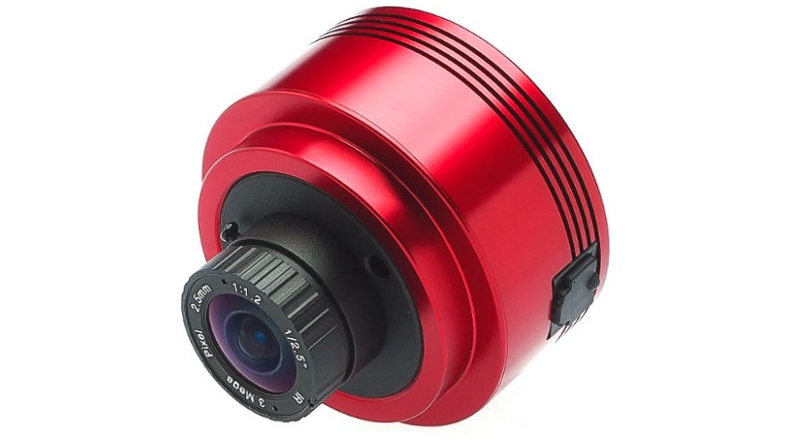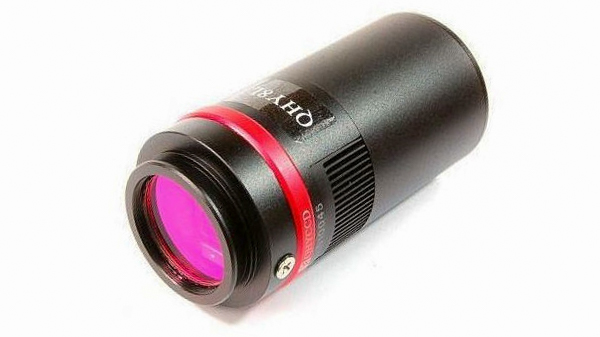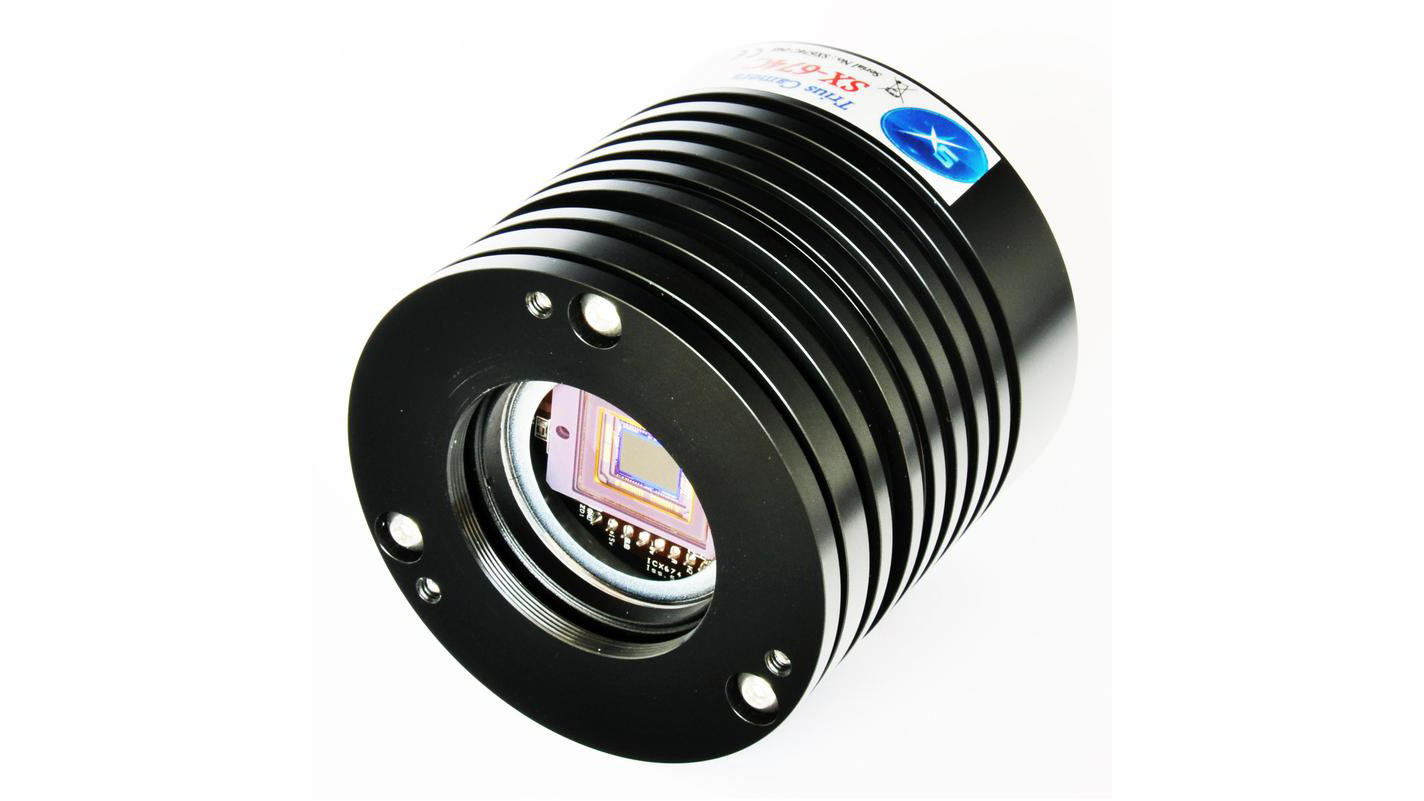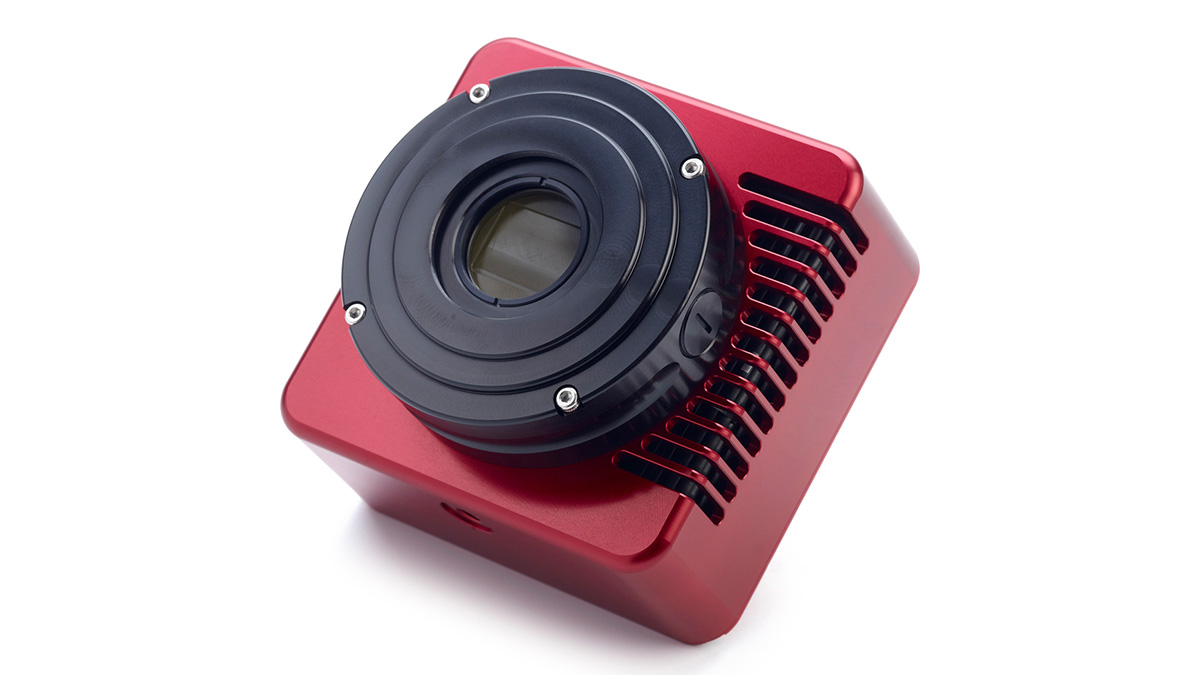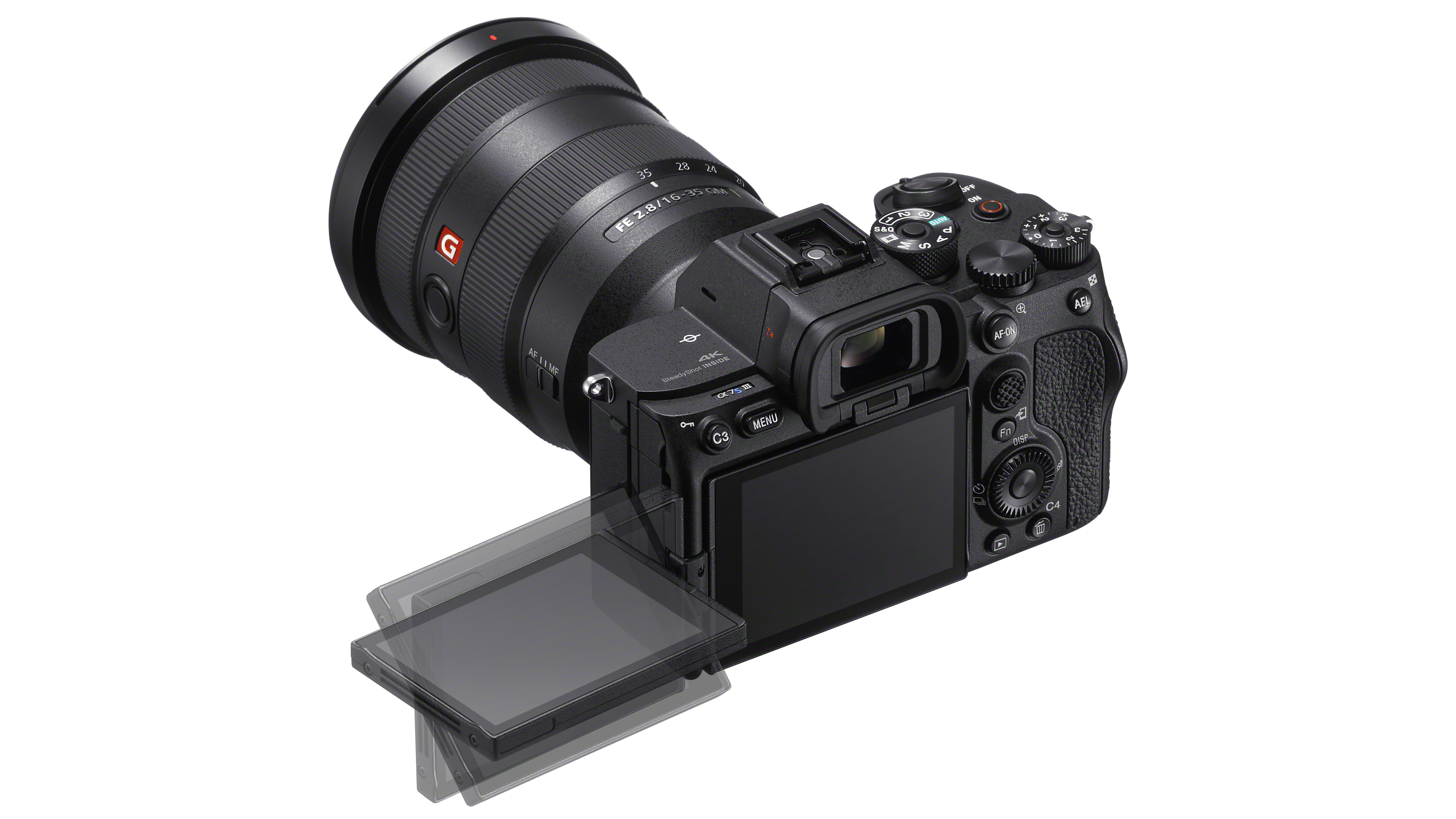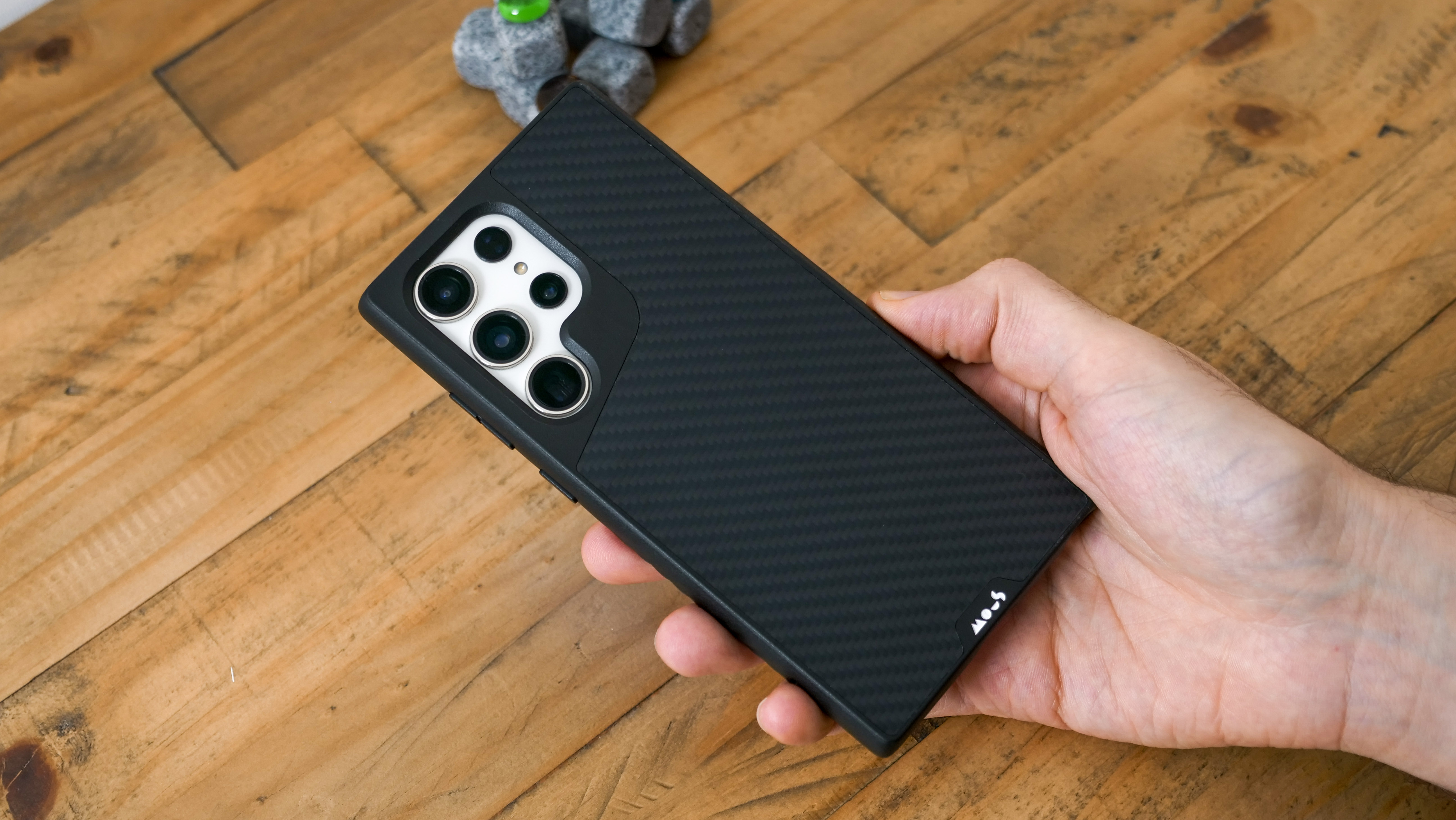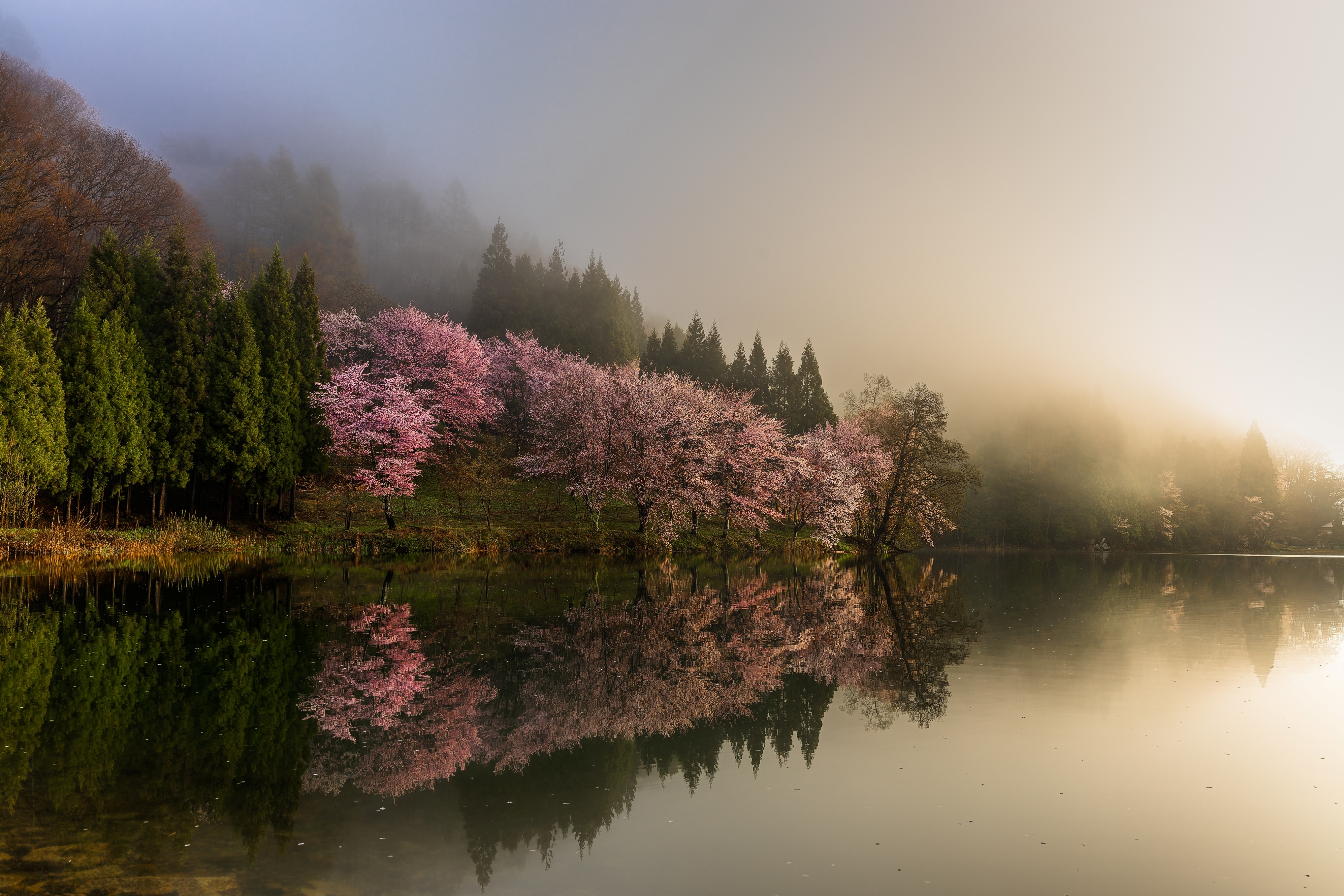Best CCD cameras for astrophotography: specialist cameras for space watchers
We round up the best CCD cameras for astrophotography along with CMOS cameras for deep space shooting
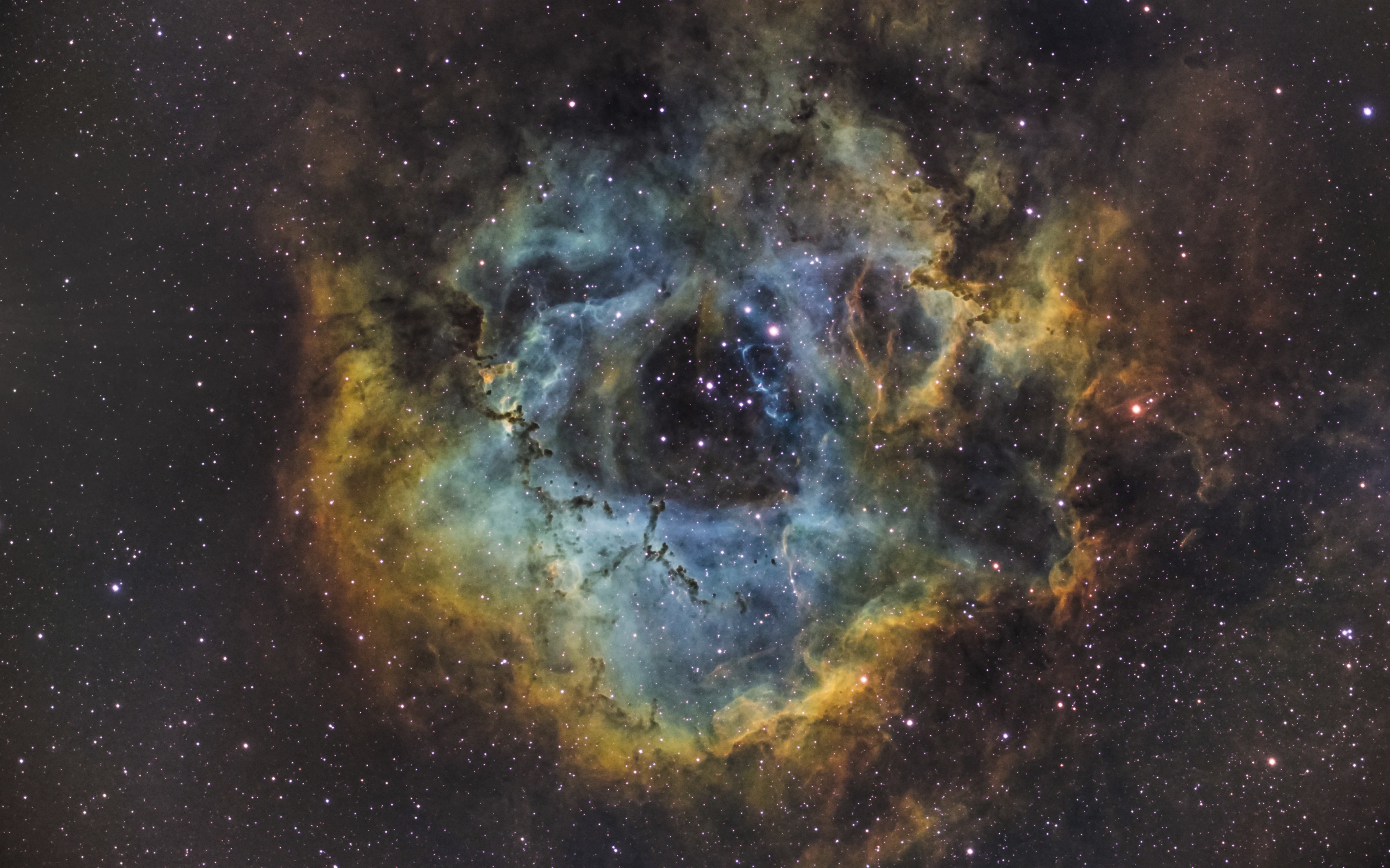
Once upon a time not so long ago, the best CCD cameras for astrophotography required serious cash. In the early days of this technology, in the late 1990s, such cameras were incredibly cumbersome, expensive and difficult to use. Fortunately the technology has moved on rapidly and today we are spoilt for choice when it comes to finding the best CCD camera for astrophotography.
Unlike normal digital cameras, a CCD camera is specifically designed to work with telescopes, and is optimized for photographing deep space.
Today there is something for almost every budget and experience level. This of course means it can be difficult to actually make a decision on what to buy. In this guide, we share our pick of the eight best CCD cameras for astrophotography (including some that actually use CMOS sensors), covering all aspects and budget levels.
We also suggest some conventional cameras at the end, which are a sensible choice for astrophotography if you want a picture that can take pictures when not tethered to your telescope.
Best CCD cameras for astrophotography
1. ZWO Optical ASI120MC Color CMOS camera
Specifications
Reasons to buy
Reasons to avoid
• Buy at Astroshop.eu for £188
The ZWO ASI120MC camera is ideal if you're new to astrophotography and don't know where to start – especially if you're looking for a piece of kit that's not only easy to set up and use, but also affordable too. What's more, given that it shoots in color, no additional filters are needed for good results.
This dedicated camera is designed to attach to your telescope and provide live on-screen video (and enable you to capture video sequences). You won't need a T-ring to affix it to the end of your telescope, it slots into the star diagonal, leaving astrophotographers to find the focus as if they were using a standard eyepiece. It's important to note that you will require a reflector or refractor that's mounted to an equatorial mount that can accurately track the motion of the sky, keeping your images pin-sharp. For best results and easy set up, we recommend getting your fine-tuning just right during the daylight hours before embarking on an observing session, where you can explore exposure and gain.
Meanwhile, downloading the drivers and app to our laptop is extremely intuitive, meaning that we didn't need to consult the manual too often and operation via a USB3 is seamless. This CMOS is compatible with both Windows and Mac OS.
The amount of light absorbed by the sensor makes the ZWO ASI120MC best for planetary and lunar imaging, however, it provides fair results of the brighter deep-sky targets that are around magnitude +4, like the Orion Nebula (Messier 42).
The rugged lunar surface, rings of Saturn and the atmospheric bands of Jupiter are standout candidates, particularly with a 60-second exposure – views are of the wide-angled variety, so the planets do look small at first, but cropping in will reveal enough detail that's sure to delight beginners to astrophotography.
2. ZWO Optical ASI183MC Pro Cooled Color CMOS camera
Specifications
Reasons to buy
Reasons to avoid
• Buy at Astroshop.eu for £680
There is no getting away from the fact that dedicated cooled cameras geared toward long-exposure deep-sky imaging are expensive. The ZWO ASI183MC Pro offers an entry-level route into this type of astrophotography; it doesn't set you back thousands of dollars or pounds, while still allowing you to achieve your desired images. Excellent images of the planets and Moon can still be had thanks to the 20.2 MP sensor.
The ZWO ASI183MC Pro offers a two-stage cooling system to minimize noise while taking longer exposures, and is featured with a large 20MP CMOS chip. The camera comes fully-equipped, allowing you to get started straight out of the box, and includes a small, padded zip bag as well as a collection of adapters that allow you to attach to your telescope and accessories with ease. It's important to note that the cooling system is powered by a 12v supply, which isn't included in the package, but can be purchased separately.
This camera comes in either one-shot color or mono models – both are the same price, although if you're looking to get away from using a filter wheel, the choice is obvious at no extra cost. Attaching the CMOS to our telescope and a laptop is an intuitive experience.
Given the ZWO ASI183MC Pro's dedication to deep-sky imaging, we turned our attention to the Orion Nebula (Messier 42) after attaching it to a small refractor telescope. On first impressions, a superb amount of detail is achieved with this CMOS, even with short exposures: red-purple nebulosity is captured with minimum effort, while views of the star-forming region's Trapezium Cluster got even better with longer exposures, stacking and processing in Photoshop.
As with the ZWO ASI120MC, images are captured with a wide-field of view, so we made use of the region of interest (ROI) feature, while shooting king of the Solar System, Jupiter.
While detailing of the cloud bands and Great Red Spot is breathtaking given the ZWO ASI183MC Pro's sensitivity to near-infrared wavelengths, we discovered that color is polluted by an infrared (IR) signal, giving the planet's atmosphere a pink appearance – we recommend purchasing an additional UV/IR blocking filter for optimum results.
3. Orion Starshoot USB color eyepiece camera II
Specifications
Reasons to buy
Reasons to avoid
For those seeking to try their hand at imaging brighter objects like the Moon and planets with a minimum financial outlay, the Orion Starshoot USB color camera is a great place to start. It's fun and easy to use, making it ideal for kids and budding astrophotographers and fits with ease to a 1.25-inch telescope focuser or adapter.
Though limited to targets of low magnitude, the Orion Starshoot USB color camera will certainly enable you to enjoy real-time views of the lunar surface and bright planets on your laptop screen. It's also an intuitive step in the right direction in assisting budding astrophotographers to start capturing images of their desired targets. As expected, images captured with this piece of kit are of a fair quality – users shouldn't expect high definition. Reasonable clarity and contrast is achieved with additional image processing.
This camera will make a great gift for the young budding astronomer, provided they're aware of its capabilities. A huge plus is that the software you'll need to process videos taken with this camera is available at no extra cost online.
4. Celestron NexImage Solar System Imager
Specifications
Reasons to buy
Reasons to avoid
Considering the price, the Celestron NexImage Solar System Imager is an impressive package. Reasonable quality shots can be achieved of the lunar surface and the brighter worlds of the Solar System thanks to the 1280 x 720 sensor (which is also used by the Philips Toucam webcams), while image-processing and control software (Registax and AMCap) is included that makes for an all-inclusive bundle. Additionally, the NexImage Solar System Imager is able to produce 10-bit data quality for an improved dynamic range.
The black plastic casing is of a fair quality, while a 1.25-inch eyepiece adapter makes threading to our in-house telescope a simple process: the two fitted neatly enough together, with next-to-no wobbling. A USB cable, which measures 2.13 meters in length, is permanently attached to the camera – a good solution if you know that you're prone to losing accessories in the dark, but astrophotographers should treat it with care; damaging it means that the NexImage Solar System Imager will be made redundant.
Installation is a straightforward affair, making use of a CD that can be popped into your computer drive. Navigating the instructions is intuitive, allowing astrophotographers to be set up in no time.
It's only possible to image at frame rates of up to 30 frames per second (fps) with the Celestron NexImage Solar System Imager, but we discovered that 5fps is the sweet spot that enabled us to achieve reasonable results, given its "glorified webcam" design.
The sensor pulled some color and clarity from the surface of the Moon, picking out a gray-blue from the lunar seas and a decent amount of detail, while the brownish tint of Jupiter's belts are easily captured. A decent enough camera for the budding astrophotographer, provided expectations are reasonable.
5. Lunatico Revolution Imager System R2 Color
Specifications
Reasons to buy
Reasons to avoid
Not just a camera but a whole system for capturing astro images. This CCD 720p video camera comes with a color screen, and can automatically stack up to six exposures of up to five seconds using its automated video processing.
The whole system is powered by a built-in rechargeable battery, and comes with a 0.5x focal reducer to provide a wider field of view. It’s built around a Sony imaging chip, and comes with a remote control that allows you to change exposure on the fly, bringing out the colors of deep sky objects without needing to peer into an eyepiece.
6. ZWO ASI290MM CMOS imaging camera
Specifications
Reasons to buy
Reasons to avoid
• Buy at Astroshop.eu for £377
Used by the some of the world's renowned planetary astrophotographers, the ZWO ASI290MM is perhaps one of the greatest planetary imaging cameras currently available. Its highly sensitive chip, coupled with very fast video frame rates, make it an ideal choice for those looking for the best possible camera for lunar and planetary imaging. It’s also very easy to use, with free third-party software packages available to operate the camera to its full potential.
In terms of image quality, the ASI1290MM is a clear step up from the older ASI120-S – lower noise pollution and higher resolution is achieved, while an enormous amount of stars are available in the field of view, all with superb signal-to-noise ratio.
If you're looking to play with color, you will need to buy a filter wheel, especially given that the ASI290MM is a mono camera – a minor niggle, but given the image quality we couldn't grumble. And the resulting shots are nothing short of breathtaking in good seeing conditions. The rugged, cratered surface of the Moon boasted excellent contrast and clarity at 170fps and 4ms shutter speed.
Whether it's attached to a small, beginner's telescope or an advanced, large-aperture instrument, this lightweight and sensitive camera delivers excellent results. The only potential issue imagers should be aware of is the very small pixel size, which can limit imaging with telescopes of long focal lengths.
7. QHY 8L cooled color CCD camera
Specifications
Reasons to buy
Reasons to avoid
Buy at Astroshop.eu for $1,955 / £ 1,530
The QHY 8L is a great camera for serious enthusiasts looking to capture high-quality images of faint, diffuse celestial targets, such as galaxies and nebulae. It has a price that's not too dissimilar from a DSLR, yet it's still just as capable. As an added bonus, it's also extremely portable and being a one-shot color camera, no additional filters are needed: you can start capturing dazzling imagery with full 16-bit depth straight off the bat.
With a minimum amount of testing, astrophotographers will get the hang of creating superb images of the night sky. This CCD isn't suitable for imaging the planets and the Moon, but if that doesn't bother you – and deep-sky targets are your favorite type of object to shoot – then the QHY 8L is money well spent.
Its large sensitive chip, coupled with a proper cooling system for minimum noise levels make it a great choice for capturing the faint, wispy nebulosity of star-forming regions as well as the delicate spiral arms of galaxies. We were treated to very sharp views of a variety of targets, including the Helix Nebula (Messier 27), the Pleiades (Messier 45) and the Pinwheel Galaxy (Messier 101).
The overall build, as expected for the price, is of excellent quality – it's finished with a matte design to avoid glare ruining your images.
8. Starlight Xpress Trius Pro-674
Specifications
Reasons to buy
Reasons to avoid
This progressive-scan mono CCD astro camera has a resolution of 1,940x1,460 pixels over an area of 58.4mm2, and is ideal for using a filter wheel to capture as much detail as possible from night sky images.
There's a built-in two-stage fan at the back of the camera to keep it cool, and the CCD itself sits in a chamber filled with argon gas to prevent any moisture build-up. There are three mini USB ports on the unit’s backplate, for connecting accessories such as powered filter wheels, plus an RJ11 for an off-axis guider.
The camera provides a strong blue light and infrared response, and is a good choice for teaming with a H-alpha filter to isolate nebulae and galaxies.
• Buy at Astroshop.eu for £1,820
9. ATIK 383L+ Mono CCD camera
Specifications
Reasons to buy
Reasons to avoid
• Buy at Astroshop.eu for £1,600
The last entry in our list of the best CCD cameras for astrophotography is the ATIK 383L+. The Kodak 8300 CCD chip is found in a few of the most popular cameras used by experienced deep-sky photographers. The ATIK 383L+ is quite pricey, given that it isn't a one-shot colour camera or supplied with color filters, yet it achieves superb results, regardless.
Its great low-noise performance, coupled with full 16-bit depth, offers data of the highest quality. The camera combines low-noise electronics with a research-grade sensor. It's worth noting too, that if you operate this camera at a voltage less than 12V, noise will ruin your images.
When you experiment with the ATIK 383L+, you'll be glad you did. We noted next-to-no hot pixels in our images (which can easily be resolved by using a dark image) when we turned to our old favorite, the Orion Nebula (Messier 42). Even with no stacking, the clarity and crispness of the star-forming region is breathtaking.
Once upon a time a camera like the ATIK 383L+ would have cost several times the price it is today – all of the more reason to give it some serious consideration looking for a top-end astronomical CCD camera, and especially if you're looking to get into narrowband imaging.
Also consider...
Specifications
Reasons to buy
Reasons to avoid
If you are looking for the ultimate interchangeable lens camera for astrophotography then look no further than the Sony Alpha A7S Mark III.
The amazing low-light performance of this full-frame camera raised many an eyebrow when it appeared on the market. Given the camera sports a large 36mm full frame sensor it also offers a really large chip at an affordable price – especially when compared to dedicated astronomical cameras of similar specification. This means it is ideally suited to deep-sky imaging.
The Sony Alpha A7S Mark III also boasts high speed video capture capabilities so could also be employed for capturing lunar or planetary video sequences if you wish. A superb high-performance camera that will satisfy even the most demanding photographer.
Specifications
Reasons to buy
Reasons to avoid
Digital SLR cameras are without doubt enormously popular. While they are of course great choices for conventional photographic applications they are also frequently employed for astrophotography.
One of the great things about investing in a camera like the Canon EOS Rebel T100 / Canon EOS 4000D / Canon EOS 3000D is that it will allow you to try your hand at almost any specific area of the subject.
While it is perhaps best-suited to taking picturesque nightscape photographs with the night sky arching over some foreground landscape, the Canon EOS Rebel T100 / Canon EOS 4000D / Canon EOS 3000D can easily be connected to a telescope and used for proper long exposure astrophotography as well as lunar and planetary imaging – that's because it comes with high speed video capture capabilities.
• Canon EOS Rebel T100 / Canon EOS 4000D / Canon EOS 3000D review
Specifications
Reasons to buy
Reasons to avoid
Being able to attach a phone camera to the eyepiece of your telescope opens up a whole world of astrophotography without needing to spend thousands. The results might not be quite the same as with a dedicated CCD or CMOS camera setup, but can be surprisingly good.
The camera cluster on the S23 Ultra is superb, with a massive 200MP on the main camera sensor that can bin its images down to 12MP for better noise handling. There's also the S-pen accessory, which has an integrated camera shutter button, so you don’t need to touch your phone and risk adding blur to the images through vibrations. Its image processing is also excellent, and despite strong competition from the 48MP sensors on the latest iPhones remains our top choice for smartphone astrophotography.
Choosing a CCD camera for astrophotography
Today CCD/CMOS digital imaging cameras generally come in two main types: Mono B&W or one shot color. The mono camera type produces images in grayscale only, so to produce color imagery you'll need a set of RGB filters. One shot color cameras can, as the name implies, produce color images straight off the bat.
Color imagers are without doubt easier to use if you're after color photos. However, because of the way they one shot color cameras work, the finest imagery still comes from mono cameras employing color filters. To be honest this is an issue only the most demanding astrophotographers need worry about – these days there is a much smaller difference in image quality .
Another consideration with CCD and CMOS cameras is the size of the sensor and the pixel size of the sensor. Your choice will depend on what you wish to photograph. For nebulae, galaxies, nightscapes and so on, you'll need a large sensor giving a big field of view. For lunar or planetary photography, you'll want a smaller sensor giving a smaller field of view.
Modern cameras can work in two modes: either taking single still frame images or high speed video streams. The former is generally employed for imaging nebulae and galaxies while the latter is used for imaging the moon and planets.
Almost all of the cameras you can buy today operate via a high-speed USB3 interface. In general all will come with their own operating software, however there are many third part packages available, and many of these will actually be better than the manufacturer-supplied software.
Let's get started with our roundup of the best CCD cameras for astrophotography. We've included a range of different astronomical cameras geared to different tasks, from lunar, solar and planetary imaging to long-exposure deep sky photography. Regardless of what you wish to do there is an affordable camera out there that will unquestionably meet or exceed your expectations.
Read more:
• Astrophotography: How-to guides, tips and videos on getting your best shots
• Astrophotography tools: the best camera, lenses and gear for shooting the night sky
• The best telescopes for astrophotography
• The best binoculars
• The best star tracker camera mounts
• Best light pollution filters for astrophotography
• Best head torch
The best camera deals, reviews, product advice, and unmissable photography news, direct to your inbox!
Damian A. Peach FRAS is a British amateur astronomer, astrophotographer, lecturer and author. Best known for his photographs of a wide variety of astronomical objects. In 2011 he was crowned overall winner of the Royal Greenwich Observatory astrophotographer of the year competition.
- Ian EvendenFreelance tech journalist
